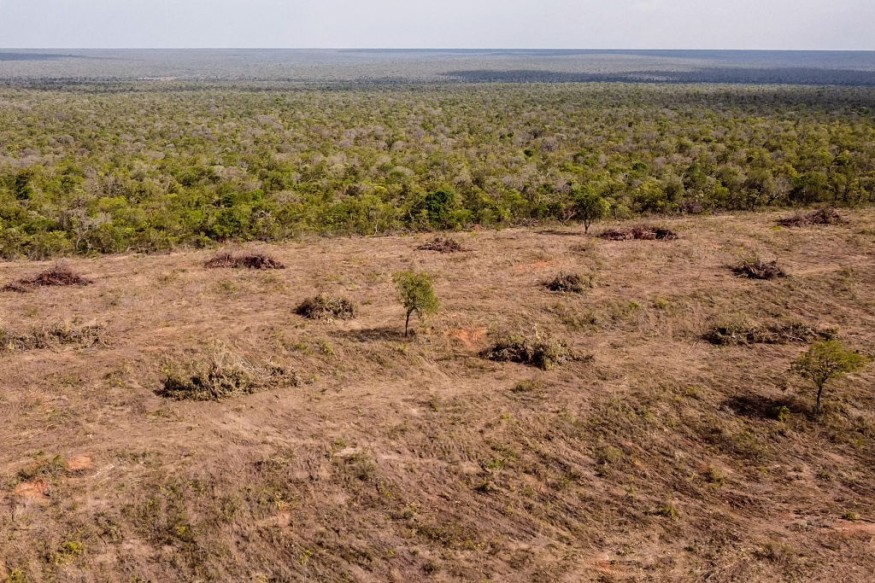
Indonesia's main forest loss increased by 27% in 2023 compared to the previous year, a World Resources Institute examination of deforestation statistics revealed. However, in comparison to the 2010s, the loss is still seen as historically low.
Key Player In Deforestation
Indonesia is a huge tropical island that stretches across the equator. It is home to the third-largest rainforest in the world, which is home to a variety of endangered animals and flora, such as orangutans, elephants, and enormous forest flowers. Others don't live somewhere else.
Some were alarmed by the increase in the numbers and linked some of the more recent deforestation to the world's lust for Indonesia's enormous nickel deposits, which are essential for the country's transformation to green energy.
Global Forest Watch claims that since 1950, more than 74 million hectares (739,998 sq km) of Indonesian rainforest-an area twice the size of Germany-have been burned, cleared, or otherwise altered for the production of palm oil, paper and rubber plantations, nickel mining, and other commodities.
Based on the data, deforestation associated with the mining industry took place in Sumatra, Sulawesi, Mlauku, and Kalimantan.
The biggest nickel reserves in the world are found in Indonesia. Nickel is a necessary component of solar panels, electric cars, and other products required for the switch to green energy.
Additionally, Timer Manurung, the director of Auriga Nusantara, an Indonesian non-governmental conservation organization, stated that there is a direct correlation between some of this deforestation and the growth of the country's nickel industry.
He added that it's unclear how much of Indonesia's deforestation is caused by mining. However, he referred to it as a "significant driver" and claimed that the nation's mining and nickel industry, which has rapidly expanded to include over 20 new smelters to process the ore, is "repeating Indonesia's oil palm and pulpwood mistakes" by boosting deforestation.
Indonesia is also the world's largest producer of palm oil, a major coal exporter, and a leading manufacturer of paper pulp. In addition, it exports tin, rubber, gas, and other minerals.
The data shows that on the tropical islands of Kalimantan and West Papua, industrial plantations expanded at various sites next to existing palm oil trees and pulp and paper farms.
According to the Indonesian Ministry of Environment and Forestry, concessions given prior to the present administration's election in 2014 are where the expansion took place.
Read Also : Main Threats of Deforestation
Decreasing Deforestation Activities
Rod Taylor, global director of the forests program at WRI, said massive deforestation appears to be decreasing in comparison to previous times.
Huge plantation growth, logging, and oil palm industries occurred all over Indonesia in the 2010s. According to research published in the journal Nature Climate Change, between 2004 and 2014, the rate of deforestation doubled to over 2 million hectares annually.
The analysis shows that in 2023, primary forest loss in areas larger than 100 hectares accounted for just 15% of the total loss.
Taylor explains the absence of significant areas of deforestation by pointing out that corporations risk damage to their brand if they are discovered to be clearing trees. Non-governmental organizations, customers, and governments, such as the European Union, have pushed for businesses to stop using deforestation methods in recent decades.
Indonesian President Joko Widodo imposed a three-year moratorium on new permits for plants that produce palm oil in 2018. Additionally, government data shows that between 2021 and 2022, the rate of deforestation decreased.
However, there was still a lot of small-scale primary forest loss happening all over the nation, even in certain protected places like the Rawa Singkil Wildlife Reserve on the island of Sumatra and Tesso Nilo National Park. Elephants and tigers, two severely endangered species, can be found in both regions.
According to Taylor, one reason for the lower-than-expected fire season was a wetter-than-usual El Nino, which often results in less rainfall and higher temperatures that can allow fires to start clearing land for agriculture to spread quickly.
The Indonesian government's investments in fire prevention tools and community-based firefighting initiatives also had an impact.
Numerous regions in Indonesia proclaimed emergencies, a surge in respiratory ailments occurred, and thousands of people were forced to evacuate their residences.
"The good news in Indonesia is that the fire prevention measures are much more sophisticated than they were in years past," said Taylor.
© 2025 NatureWorldNews.com All rights reserved. Do not reproduce without permission.





